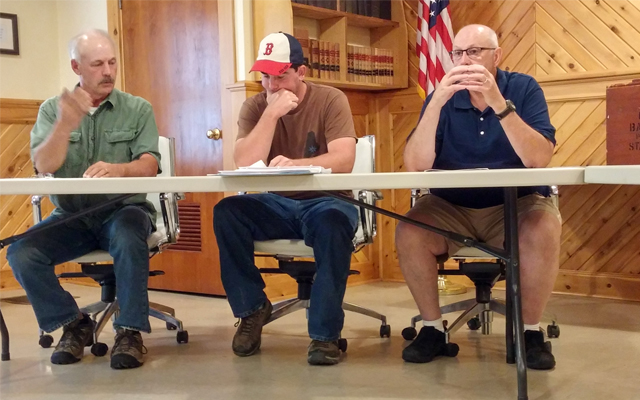
LUDLOW, Maine — This November, Ludlow residents will once again consider whether the town should pull out of the SAD 70 school system with the hopes of joining neighboring RSU 29.
Ludlow has been a member of SAD 70 since 1973.
The town has been moving forward with its withdrawal plan since April 2016, when residents voted 44-19 at the annual town meeting to pursue leaving the district. Voters will ultimately decide the withdrawal at the November election. A two-thirds majority is needed to successfully withdraw.
Over the past year and half, the two sides have been negotiating a withdrawal agreement, which has been conditionally approved by the Maine Department of Education, according to SAD 70 Superintendent Scott Richardson. That agreement was signed by both groups on June 21.
According to the agreement document, the effective date of the withdrawal would be June 30, 2018. Students in grades 7-12 would have the right to continue their education at Hodgdon Middle-High School, as would any younger sibling of those students.
The town will be on the hook for Ludlow’s share of any outstanding debt the district has, but will also receive a percentage of the district’s undesignated fund (surplus) balance.
“There is money owed to Ludlow by the school district and there is money owed to the school district by Ludlow, so it may be a wash,” Richardson stated.
About 20 people attended a public hearing Monday on the agreement in Ludlow, posing only a handful of questions. Some residents wanted to know how the SAT scores for students in both SAD 70 and RSU 29 compared, what the dropout rates were and what percentage of students went on to postsecondary education.
Those answers were not available at the meeting, but Melissa Ivey, a member of the committee, said she would seek those answers.
SAD 70 school board chairman Joel Oliver moderated the meeting and gave some highlights on why the town should remain with SAD 70.
“We have smaller class size, which allows for more individualized instruction,” Oliver said. “We are at the forefront of Aroostook County schools with early college courses that we offer. We are proud of our schools. We have done a lot of work to our infrastructure the past two years and if you haven’t been to our schools you really should come check them out.”
By withdrawing from SAD 70 and switching to RSU 29, Ludlow officials believe they will be able to save about $44,000 per year to educate their students.
Theron Bickford, a member of the Ludlow Board of Selectmen, said the board owed it to the residents to explore all options for reducing the tax burden.
“Our job is to look at everything we can do to provide the best education for our children and at the same time meet the needs of our taxpayers,” Bickford said. “We have some really big challenges as a board to keep taxes in check.”
SAD 70 serves the communities of Amity, Cary Plantation, Haynesville, Hodgdon, Linneus, Ludlow and New Limerick. RSU 29 serves Houlton, Hammond, Littleton and Monticello.
On April 1, the last official count of students in the town, there were 43 students residing in Ludlow. Of that amount, 31 were attending classes in SAD 70, while 12 were attending RSU 29.
Supporters of withdrawal previously stated they believed the town could achieve a cost savings by switching school districts. Others expressed it was simply a desire for the children to attend classes in RSU 29.
Those opposed to the plan have stated their children want to remain with their friends and preferred the smaller class sizes afforded students in SAD 70.
Ludlow residents first considered pulling out of SAD 70 five years ago following two citizen’s petition initiatives. The town originally petitioned the state to withdraw from SAD 70 in the spring of 2012. Following a public hearing and town vote, residents gave the go-ahead to start the withdrawal process by a referendum vote of 67-36 on March 29, 2012.
State authorities nullified that vote, however, in May of that year when they learned the citizens’ petition had not acquired the proper amount of signatures needed to send it to a vote in the first place.
Petitioners later gained the proper number of signatures and residents voted in November 2012 to remain in SAD 70 by nearly a two-to-one margin. Voter turnout was extremely high at the polls for that election with 79 percent of the registered voters participating. In that vote, 150 residents opposed the withdrawal plan, while 79 were in favor of it.






